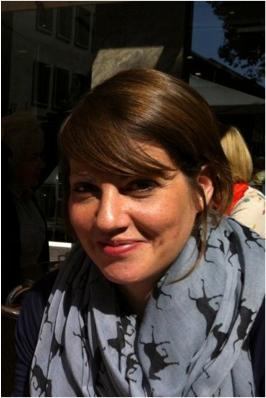Person
Richardson, Rebecca
|

|
Biography and Research Interest
Non-Zebrafish Publications
Richardson, R.J., Hammond, N.L., Coulombe, P.A., Saloranta, C., Nousiainen, H.O.,
Salonen, R., Berry, A., Hanley, N., Headon, D., Karikoski, R., and Dixon, M.J. (2014) Periderm
prevents pathological epithelial adhesions during embryogenesis. The Journal of clinical
investigation. 124(9).
Richardson, R.J., Dixon, J., Jiang, R., and Dixon, M.J. (2009) Integration of IRF6 and
Jagged2 signalling is essential for controlling palatal adhesion and fusion competence. Human
Molecular Genetics. 18(14):2632-42.
Fenwick, A., Richardson, R.J., Butterworth, J., Barron, M.J., and Dixon, M.J. (2008) Novel
Mutations in GJA1 Cause Oculodentodigital syndrome. Journal of dental research.
87(11):1021-6.
Richardson, R.J., Dixon, J., Malhotra, S., Hardman, M.J., Knowles, L., Boot-Handford, R.P.,
Shore, P., Whitmarsh, A., and Dixon, M.J. (2006) Irf6 is a key determinant of the keratinocyte
proliferation-differentiation switch. Nature Genetics. 38(11):1329-34.
Richardson, R.J., Joss, S., Tomkin, S., Ahmed, M., Sheridan, E., and Dixon, M.J. (2006) A
nonsense mutation in the first transmembrane domain of connexin 43 underlies autosomal
recessive oculodentodigital syndrome. Journal of Medical Genetics. 43(7):e37.
DOI:10.1136/jmg.2005.037655
Richardson, R.J., Donnai, D., Meire, F and Dixon, M.J. (2004) Expression of Gja1 correlates
with the phenotype observed in oculodentodigital syndrome/type III syndactyly. Journal of
Medical Genetics. 41(1):60-7. DOI:10.1136/jmg.2003.012005
Kondo, S., Schutte, B.C., Richardson, R.J., Bjork, B.C., Knight, A.S., Watanabe, Y., Howard,
E., Ferreira de Lima, R.L.L., Daack-Hirsch, S., Sander, A., McDonald-McGinn, D.M., Zackai,
E.H., Lammer, E.J., Aylsworth, A.S., Ardinger, H.H., Lidral, A.C., Pober, B.R., Moreno, L.,
Arcos-Burgos, M., Valencia, C., Houdayer, C., Bahuau, M., Moretti-Ferreira, D., Richieri-Costa,
A., Dixon, M.J., and Murray, J.C. (2002) Mutations in IRF6 cause Van der Woude and popliteal
pterygium syndromes. Nature Genetics. 32(2):285-9. DOI:10.1038/ng985
